Domestic sheep (Ovis aries) is one of the most popular livestock animals in existence. These docile creatures were one of the earliest domesticated species in the world that were used for agricultural purposes. Sheep are bred for their wool, pelt, and for their meat and milk. But how long do sheep live? What is the typical life cycle of a sheep and what are the potential causes of early mortality?
In this article, I’ll go over how long sheep live, as well as the sheep life cycle. I’ll also go over what conditions help sheep live longer.
Life Stages of a Sheep
Female sheep (ewes) often give birth to one to two offspring in the spring. A baby sheep or lamb usually tries to stand and walk within minutes after it is born. The lamb is also placed in a pen together with its mother to keep them away from the flock and give them time to bond.
This is also the time when the lamb begins nursing from its mother’s first milk, called colostrum. Colostrum is rich in vitamins, fats, and carbohydrates. It also prevents diseases and cleanses the digestive tract. Ideally, lambs should nurse as frequently as possible within the first 10 days after they are born, though sometimes a lamb cannot nurse and is raised on a bottle.
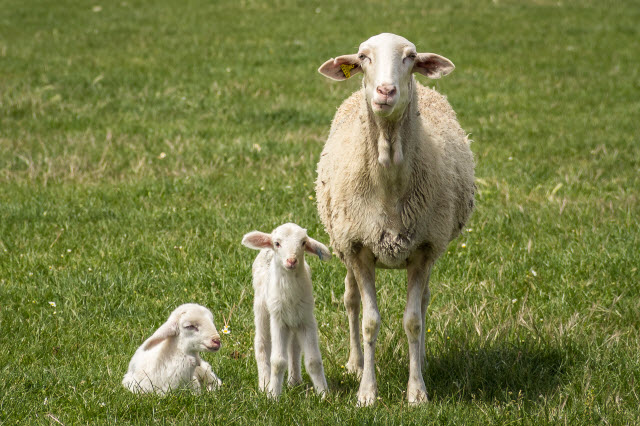
Weaning, or the transition of a lamb’s diet from the mother’s milk to solid food, can begin any time between five to 14 weeks of age. Lambs can stay with their mother until they are about five months old. At this stage, they are called weaners, and they begin eating hay, grass, or grain.
Lambs that are older than weaners but not yet adults are called hoggets. They are like adolescents or teenagers and must continue to grow mature and independent of their mother.
Sheep are considered fully grown adults when they reach one year of age.
Life Expectancy of Sheep
Domesticated sheep live to about 10 to 12 years old, similar to large dog breeds. However, some breeds of sheep may live longer than 20 years. The oldest sheep recognized by the Guiness Book of World Records died at 23 years of age, twice the age of the average sheep.
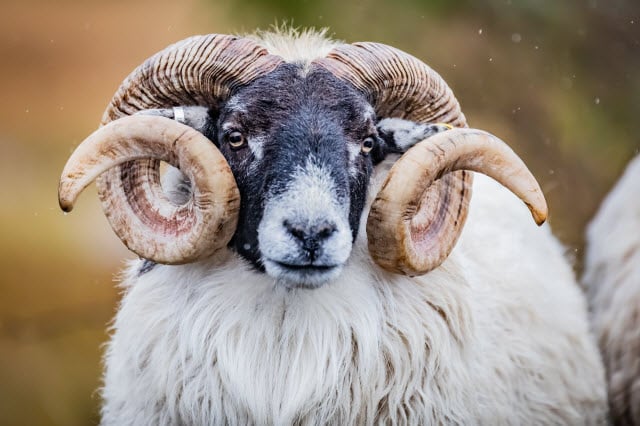
The age of a sheep may be estimated by counting the number of its front teeth. Typically, sheep have four pairs of incisors on the lower jaw, a dental pad or no teeth on the upper jaw, and about 24 molars or grinding teeth toward the back of their jaws.
- Lambs are typically born without teeth. By the time they reach two months old, they should have eight milk teeth.
- When the sheep is about one year old, a pair of permanent incisors will replace the middle pair of teeth at the front of their lower jaw.
- At two years old, sheep will have two pairs of permanent incisors.
- In their 4th year, sheep will have four pairs of permanent incisors.
- Starting at age five, the sheep’s teeth will begin to spread apart, break, or fall out.
- At approximately 10 years, sheep will most likely lose all their teeth and will be called a gummer.
The loss of teeth (and the ability to graze) is one of the factors which typically limits a sheep’s lifespan.
Oldest Sheep Ever Recorded
There have been a few sheep which lived to impressive ages and gained media attention in recent years. They are:
- Methuselina – A Scottish Blackface ewe in Scotland died in March 2012 at the age of 25 years, 11 months after falling off a cliff. source
- Lucky – A Polwarth-Dorchester ewe in Australia died in November 2009 at the age of 23 years, 6 months after a brutal heatwave. source
- Grandma – A Horned Dorset ewe in Oregon died May 2009 at the age of 23 years, 11 months. source
Several sources mention a ewe that was 28 years and 51 weeks old dying in Wales in 1989, but I haven’t been able to find much more information on that sheep.
Threats to a Sheep’s Life Span
While old age is the leading cause of sheep death, several other factors can threaten their survival. These include:
Predator Attacks
Sheep have many natural predators, including coyotes, bears, foxes, bobcats, lynxes, wild pigs, mountain lions, and even dogs.
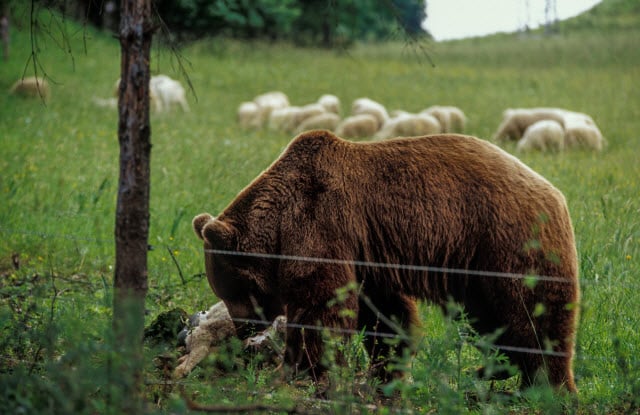
Grizzly bears can devour an entire sheep, while wild pigs can kill five to 10 sheep in a hunting spree. Bobcats go for a sheep’s hindquarters, while dogs favor the flank and head when attacking. Golden eagles also prey on sheep (typically lambs).
Diseases
Sheep are susceptible to many types of diseases. These diseases are typically caused by genetics, improper care, lack of vaccination, poor shelter or nutrition.
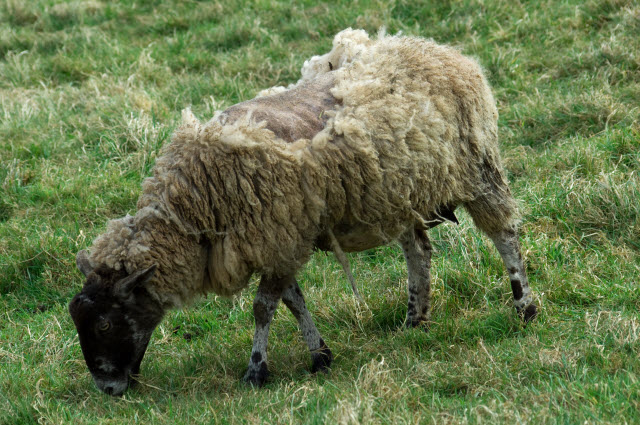
A few examples of sheep illnesses include:
- Bacterial pneumonia: A respiratory infection caused by the Pasteurella multocida. Symptoms include lethargy, high fever, breathing difficulty, loss of appetite, and a moist, painful cough.
- Caprine Arthritis Encephalitis (CAE): A virus prevalent in dairy goat breeds, but also diagnosed in meat breeds. Signs of CAE include mastitis, pneumonia, and inflammation of joints.
- Coccidiosis: A parasitic disease characterized by constipation, loss of appetite, weight loss, dehydration, and hemorrhaging in the intestinal wall.
- Enterotoxemia (Overeating Disease): Also known as pulpy kidney disease, this condition is caused by types C and D Clostridium perfringens in the intestines. It occurs in lambs and causes loss of appetite, fever, lethargy, and abdominal discomfort.
- Listeriosis: A life-threatening disease characterized by neuromuscular incoordination, seizures, facial nerve paralysis, ear droop, and impaired swallowing.
- Pregnancy Toxemia (Ketosis): A metabolic disease due to a deficiency in the intake of energy during late pregnancy. It is common in ewes that carry multiple fetuses or are over-conditioned for pregnancy.
- White Muscle Disease: A condition due to selenium or Vitamin E deficiency. It affects lambs of several days to several weeks of age and causes muscle stiffness.
Additionally, ewes will sometimes die as a result of complications during or after delivering lambs.
Culling
Sometimes older sheep die when they are culled from the flock by farmers.
Shepherds cull animals for a variety of reasons. These reasons may include a loss of productivity (for example a ewe may have a damaged udder and may no longer be able to raise lambs). Chronic health issues like foot rot could also result in culling. And finally, a desire to improve the overall quality of the flock by eliminating sheep that don’t meet a certain standard can drive a shepherd to cull some of their sheep.
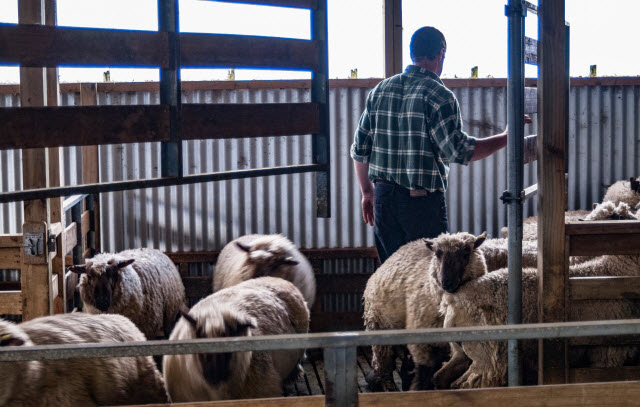
Some farms can only support a certain number of sheep, so farmers must periodically eliminate some older or less desirable animals to keep the proper balance on their farm and maintain the health and viability of the herd.
A sheep farmer must be pragmatic and determine how best to care for the entirety of his or her flock. Sometimes this means hard decisions must be made so that the farm can continue to be viable, and the sheep that remain can have plenty of space and food.
How Long Sheep Live Depends on Why They’re Raised
In addition to the factors mentioned above which can limit the life of a sheep, how they’re raised and cared for and why they’re raised can also play a role.
Some sheep are primarily raised for meat, and if the lambs on these farms are not selected to be added to the ewe flock, they will often be slaughtered for the dinner table before they reach six months of age.
On fiber farms where shepherds raise sheep for wool, sheep will live comfortable lives where they are well fed and looked after so they can produce beautiful wool for handspinning and knitting into fine garments.
Sheep who fend for themselves in the highlands of Scotland may endure more hardship and have lives frought with more peril than their domesticated counterparts.
The nature of where and how sheep are raised plays an important role in determining how long sheep live.
Information About the Life of Sheep
If you’d like to learn more about sheep, here are some quick facts about the life of sheep that you may be interested in:
Appearance
Most sheep have a thick coat of wool fleece, which is harvested annually by shearing (which doesn’t hurt the sheep – it’s like a haircut).
While most sheep have white wool, some breeds vary in color, including dark chocolate brown. There are also domesticated sheep that have spotted or piebald coats (like Jacob sheep). Sheep also have even-toed ungulates or hooves that split neatly down the middle and need to periodically be trimmed by shepherds.
They are also ruminant mammals, which means that their stomach has multiple chambers to digest food better. Since sheep are prey animals, their only defense is to flee. Quick movements and loud noises will frighten sheep and cause them to run, so it is best to move slowly when approaching sheep.
Behavior
Sheep don’t like to be alone. They typically form a flock.
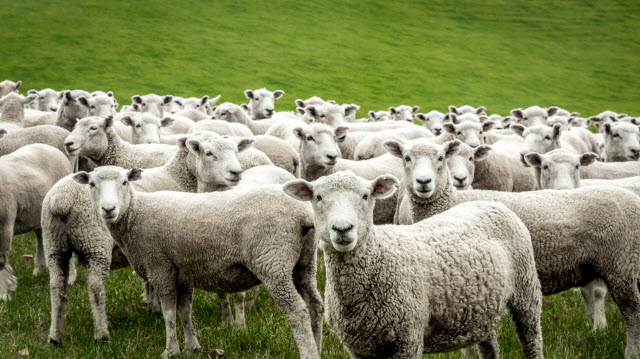
Large flocks of sheep on farms may have more than one ram which each services many ewes during breeding season each fall.
Flocking structures may vary based on sheep breeds. For example Merino sheep form a tightly knit flock and graze close to each other, while Dorsets tend to form many subgroups when grazing.
Reproduction
Rams reach reproductive maturity at four to six months, while ewes reach maturity at six to eight months. However, ewes on most farms are allowed to breed only when they are about one and a half years old. Sheep mating season, sometimes called a rut, usually occurs in autumn.
Ewes are polyestrous, which means that the estrus cycle occurs every 16-17 days during the breeding season. The duration of the estrus cycle, or heat periods, ranges between 20 to 42 hours, but most cycles last 30 to 35 hours.
Factors such as the breed and age of the ewe, the onset of its puberty, and the presence of a male mate influence the duration of the estrus period. Meanwhile, climate, nutrition, and disease can affect the ewe’s fertility.
On average, the normal gestation period of ewes is approximately 147 days. The gestation period may shorten by two to three days, depending on temperature and the ewe’s nutrition levels. The ewe’s breed also affects the gestation period. For example, medium-wool and meat-type breeds have a shorter gestation period compared to fine-wool breeds.
Multiple Births
Under natural conditions, sheep give birth in the spring after a five-month gestation period. In many flocks twins are the norm, though some sheep will have a single lamb, and other breeds (like Finnsheep) are known to deliver up to six lambs per pregnancy!
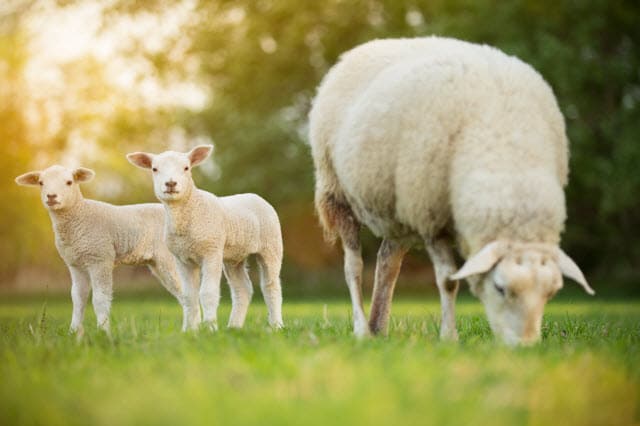
Some farmers also practice lambing during winter to ensure that there are large quantities of animals for slaughter during the Easter lamb market in spring.
Shearing
Shearing sheep is a natural part of caring for a flock, and unless you’re raising hair sheep breeds, you can expect to shear your flock at least once each year. Spring is a natural time of year to harvest the wool from your flock, as it helps the animals stay warm during the summer, and gives them time to grow a nice warm fleece for the cold winter months.
Diet
Sheep diets must satisfy their nutritional needs. They also need constant access to clean water.
Weeds such as ragwort, bracken, and cape wood, which commonly grow in pastures are poisonous to sheep. Garden plants such as foxglove, rhododendrons, oleander, and acorns should not be fed to sheep, though some sheep enjoy carrots and will eat apples in moderation as a supplement to their normal diet of grasses, forbs, legumes, hay and silage, and grain.

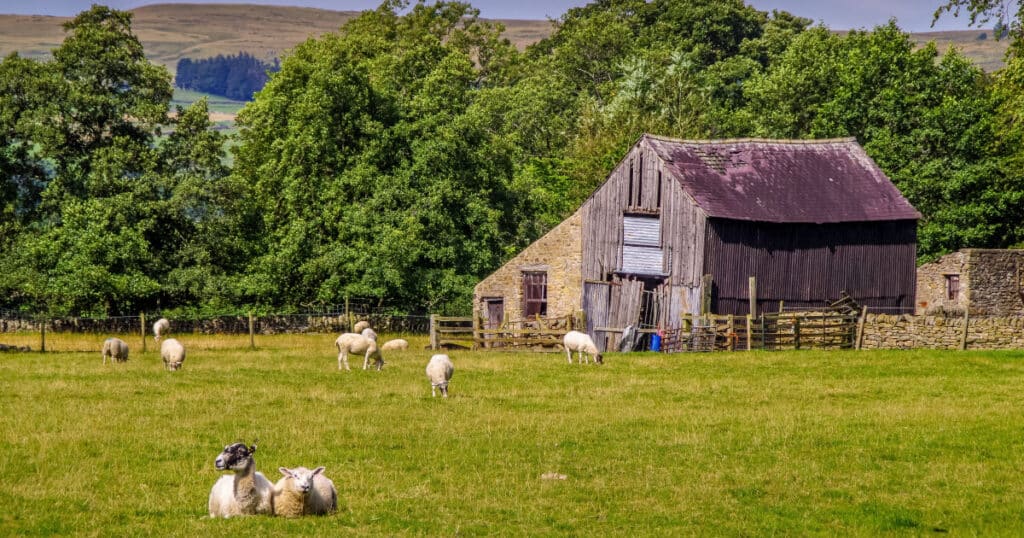
I got a sheep that was almost dead back in august she hadnt been sheared in maybe 2 yrs or maybe more it took me a month to bring her back I kept forcing electrolytes down her but im not sure what kind she is they never told me shes all white she now weighs maybe 110 to 120 is there a way i can find out what her breed is
Hi, Dwight!
So glad to hear that your ewe made it. You can check my Sheep Breeds page, which has information and photos of over 50 different breeds. That may help you identify yours.